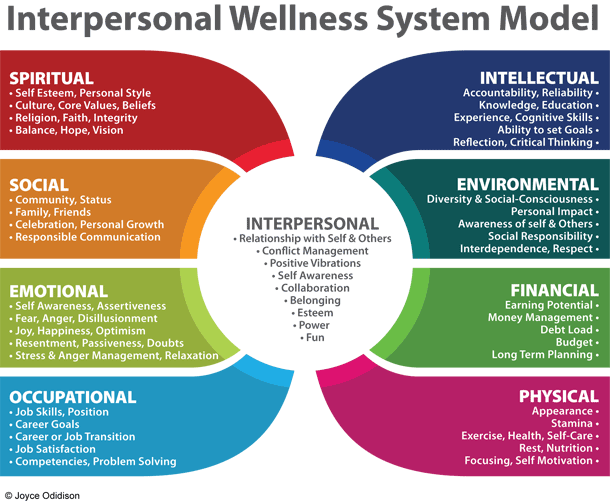
Are coaches prepared to effectively address what could be deemed the largest social epidemic of our 21st Century workforce? Can they effectively partner with organizations to develop Interpersonal Wellness Systems that will increase inclusion at work and build bridges to the increasingly diverse interpersonal challenges of the 21 Century workforce?
Workplace Challenges
At no other time in history has the workforce been faced with the enormity and scope of employee diversity and harsh economic realities of today. The culmination of these factors have resulted in a magnitude of interpersonal conflicts, dissatisfaction, grievances, mental health, and other chronic diseases, as well as employee dis-engagement at work.
The impact of this is affecting the health of employees at an alarming rate on a global scale. The world health organization has indicated that by 2020 (ten years from now), depression will become the second highest cause of employee disability, second only to coronary disease. These diseases are caused by stress, and studies show that many of the stresses that plague employees have a root cause in interpersonal interactions or relationships.
Appropriate responses to these issues have been an ongoing quest for organizations, yet, it has been proven that change from the inside out is the most effective way to improve employee productivity, and increase interpersonal wellness at work. Interpersonal Wellness coaching, a process that aids in the development of skills into wellness competencies is well positioned to help reduce stress, depression and mental health disease – what could be deemed the largest social epidemic of our decade.
Investing in Human Capital
An investment in interpersonal wellness is an investment in human capital. The human side of business is becoming very important in the 21st Century. Highly skilled and educated employees want to match their attributes with an Employer of Choice or a learning organization. A growing body of research links, employee engagement, health, satisfaction, and well-being to that of the wellness of their organization, and its investment in human capital.
Interpersonal Wellness
Interpersonal Wellness is a reality in all our lives. Everything we do has a consequence to our self and others around us. This reality will be the change factor in our lives and interactions.
For more than 15 years, I have been learning and growing in this field. However, as I responded to negative interpersonal conflicts, researched, mediated, wrote, instructed and, coached; I became convinced that there was a more effective way to address the recurring harassment, bullying and uncontrolled anger that I was asked to help resolve. This led to my developing the Interpersonal Wellness System® model, and the Interpersonal Wellness Quotient (IWQ®) metric, on which Interpersonal Wellness Coaching is based. These tools allowed my clients to get faster, more consistent and long-lasting results from their investment of working with me.
The Interpersonal Wellness System
The Interpersonal Wellness System (IWS) model emphasizes that whatever happens in one area of your life will affect the others. This means that a challenging situation in any area of a person’s life will consume resources from one or more of the other areas. If continued over a long time, it will exhaust resources from other dimensions and over time, the entire system will feel the deficit. For instance, if left unattended, poor family relationships in the social dimension will affect one’s emotional wellness, spiritual, physical, occupational, environmental, and financial wellness dimensions. If left unresolved, this will eventually impact one’s entire interpersonal system and negatively affect their effectiveness at work.
The heart of the model depicts a healthy Interpersonal reality and represents a promise to those who monitor, manage, and improve their interpersonal skills, in order to maintain a healthy interpersonal wellness quotient (IWQ). Their work and dedication to their own wellness allows them to contribute to the wellness of their relationships. They then receive the rewards of this by having more support from those relationships. They are better equipped to reduce, minimize and address interpersonal challenges without causing harm to their relationships, which affords them the pleasure of realizing the positive elements such as empowerment, status and esteem.
The system espouses that those who want to realize these positive elements in their relationships will need to work on developing their own wellness in all the areas outlined in the model. As a result, they will have a better relationship with themselves and others. They will send out positive vibrations that attract positive people to them, and they will be self-aware. They will also learn how to collaborate with others, rather than being coerced or manipulated in their relationships.

Most importantly, they will feel a sense of belonging to someone, a group or a familiy, and be held in high esteem by those in their network. They will build a foundation that empowers them to live life more fully and as a result, they will have as much fun as possible in their relationships. The thesis of the model is that we need to contribute to the wellness of our relationships or suffer a loss, and as a result, our lives will be less than ideal. There is no escape from this reality. Our primary purpose on this planet is to be and function in relationships. It is time that we rise up and do so well. We can best do so by maintaining our own wellness in all 8 dimensions. The interpersonal wellness quotient (measurement) will help us realize just how much or little wellness we have in the 8 dimensions to contribute to the wellness of our relationships. Contributing to our relationships is contributing to our life, since what we contribute will flow back to us in the form of healthy relationships that offer fun, empowerment and a sense of belonging.
Social Vibrations Impact Morale
The reality is that those who experience optimal wellness in all dimensions of their life system radiate positive social vibrations. As a result, they have a positive impact on those around them, give a positive boost to morale, and foster great relationships. Conversely, those with low levels of wellness, impedes morale and send out negative social vibrations to those around them, fueling strife and conflicts.
Interpersonal Wellness Quotient (IWQ) Metric
The Interpersonal Wellness Quotient is a measurement of the 8 dimensions of one’s interpersonal wellness system (the dimensions of the IWS model). This gives an assessment of one’s capacity to contribute to the wellness of work or life relationships. So if you are measuring at 4 out of a possible 10, you will only be able to give more than 4 to your relationships. If you want to contribute more, you need to increase your overall wellness capacity. You cannot give what you don’t have.
Too many employees suffer ill health and burnout that result in them being away on stress leave because they lacked the awareness gained through a simple assessment of their capacity. This information would inform them of their capacity to contribute to their life and work interactions, while they maintained their own wellness. This valuable information could have motivated them to make smarter decisions about refueling to improve their capacity, or taking steps to reduce their personal stress. Coaches and practitioners schooled and licensed to use the Interpersonal Wellness Quotient (IWQ) tool are better able to market themselves to organizations.
We Are All Connected
The IWS system reminds us that we are all connected. It reflects the interconnectedness and interdependence of our lives and to each other. It is also a great tool to help employees become aware of their impact on workplace morale. This penetrates the consciousness of employees and stimulates their sense of responsibility, which motivates them to new actions that will positively impact the social vibrations they send out to the workplace. Interpersonal wellness coaches and practitioners are unique in their understanding of this system. They spend time in coaching and practicing how to implement the IWQ metric in organizations for faster and longer reaching results.
I am currently working with coaches who want to become Interpersonal Wellness Practitioners (IWP) to help them prepare to market themselves to organizations as Interpersonal Wellness system experts. There is a lot of work that needs to be done to ensure that the workplace is free of violence, abuse, and interpersonal conflicts. And the Interpersonal Wellness Coach Practitioner is very well suited to partner with organizations to make this happen.
Written and submitted by: Joyce Odidison, MA, PCC,
Conflict Analyst, Strategist & Interpersonal Wellness Coach
Joyce is the President of Interpersonal Wellness Services Inc. (Life Coaching Centre) in Winnipeg, Manitoba. Her company provides Interpersonal Wellness Coaching and Quotient (IWQ) assessments, dispute resolution, strategies to respond to conflict, and poor workplace interactions. Joyce can be reached at: www.interpersonalwellness.com
Download Article 1K Club
















